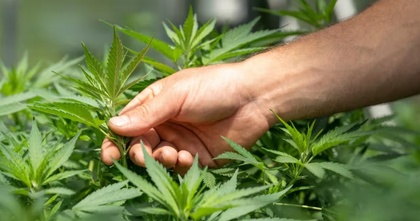70 lakh cannabis plants dismantled in two-and-a-half years in Himachal Pradesh
By IANS | Updated: July 14, 2025 00:04 IST2025-07-13T23:59:14+5:302025-07-14T00:04:16+5:30
Shimla, July 13 In the past two-and-a-half years, Himachal Pradesh Police have destroyed nearly 70 lakh cannabis plants ...

70 lakh cannabis plants dismantled in two-and-a-half years in Himachal Pradesh
Shimla, July 13 In the past two-and-a-half years, Himachal Pradesh Police have destroyed nearly 70 lakh cannabis plants in remote and difficult terrains in the state, officials said on Sunday.
To tighten the noose against the growing use of narcotics and synthetic drugs, a serious concern in the state, 5,004 cases under the Narcotic Drugs and Psychotropic Substances Act (NDPS) Act were registered, the officials added.
The state government has said that in the past few years, state districts bordering pharmaceutical hubs have been witnessing a rise in drug-related cases.
Sensing the urgency to curb this menace among youth, who were increasingly falling prey to heroin, MDMA, tramadol and other synthetic substances, the present state government has declared a war on drugs and placed the issue at the top of its governance agenda.
To address the crisis, the state government moved swiftly to strengthen the legal framework and institutional mechanisms.
Two comprehensive legislations have been enacted during this year.
The Himachal Pradesh Organised Crime (Prevention and Control) Act has been implemented with stringent provisions such as the death penalty, life imprisonment, property confiscation and heavy fines to target organised crime syndicates in the state.
The Himachal Pradesh Drugs and Controlled Substances (Prevention, De-addiction and Rehabilitation) Act has also been brought in to ensure not only stricter punishment for drug offences but also to institutionalise a robust framework for rehabilitation, prevention, awareness and livelihood creation in the state.
The Act has a provision of establishment of a state fund dedicated to support de-addiction services and community outreach initiatives drawn from the successful Sikkim model, the state government said.
A major breakthrough came in 2024 with the enforcement of preventive detention under The Prevention of Illicit Traffic in Narcotic Drugs and Psychotropic Substances Act (PIT-NDPS Act), which marked a decisive step to dismantle drug trafficking at its roots.
As part of this proactive approach, 123 proposals were submitted, leading to 41 detention orders being issued against habitual offenders and major peddlers in the state.
The crackdown extended beyond individual offenders to those providing them financial and logistical support.
In a state-wide drive, the police identified 1,214 illegal properties linked to drug traffickers, took action against 70 encroachments and initiated demolition and eviction proceedings in major cases.
The state administration also booked 80 government employees found involved in drug-related activities, sending a strong message that the crackdown spares no one, not even those within the system.
From 2023 to mid-2025, the police department undertook a sustained and impactful crackdown across the state.
A total of 5,004 NDPS cases in the state were registered, including 2,147 in 2023 and 1,717 in 2024 and 1,140 up to June 2025.
Alongside arrests, the state government executed a strategic economic offensive to dismantle the financial backbone of the drug trade.
In just two-and-a-half years of the Congress government in the state, assets worth Rs 36.95 crore were attached which include Rs 4.87 crore in 2023, Rs 25.42 crore in 2024 and Rs 6.66 crore till June 2025.
Additional cases involving Rs 7.74 crore are under the process of confirmation which signals the continued financial disruption of the narcotics economy in the state.
From 2023 to June 2025 in Himachal Pradesh, the police seized 919 kg of charas, 32.9 kg of heroin, 1,632 kg of poppy husk, 89.6 kg of opium and more than 1.64 lakh tablets and capsules.
To ensure more precise interventions, addicts and peddlers are being mapped ward-wise and categorised into red, yellow and green zones based on frequency and severity of drug usage, which enables targeted outreach and recovery strategies, the state government added.
Disclaimer: This post has been auto-published from an agency feed without any modifications to the text and has not been reviewed by an editor
Open in app